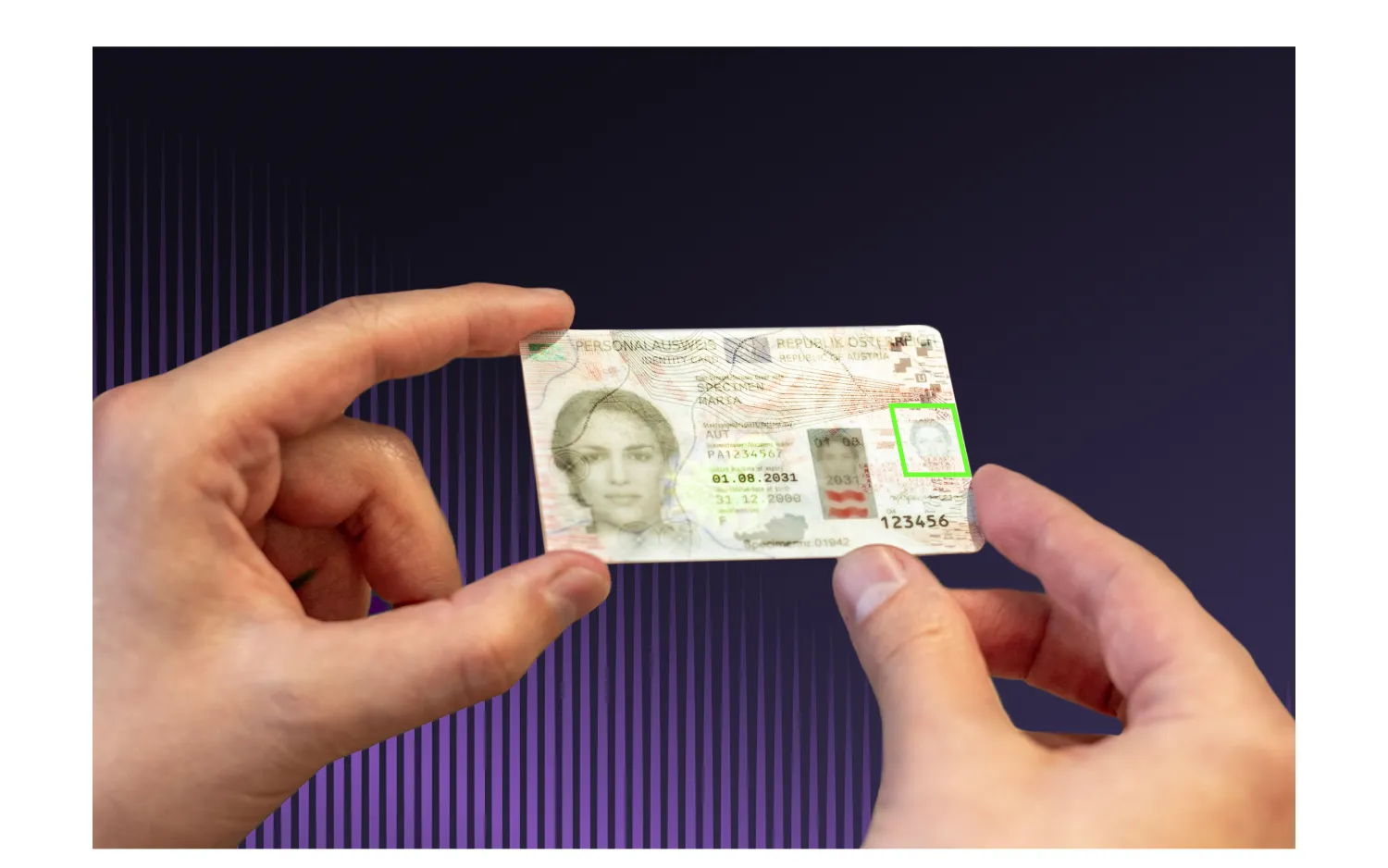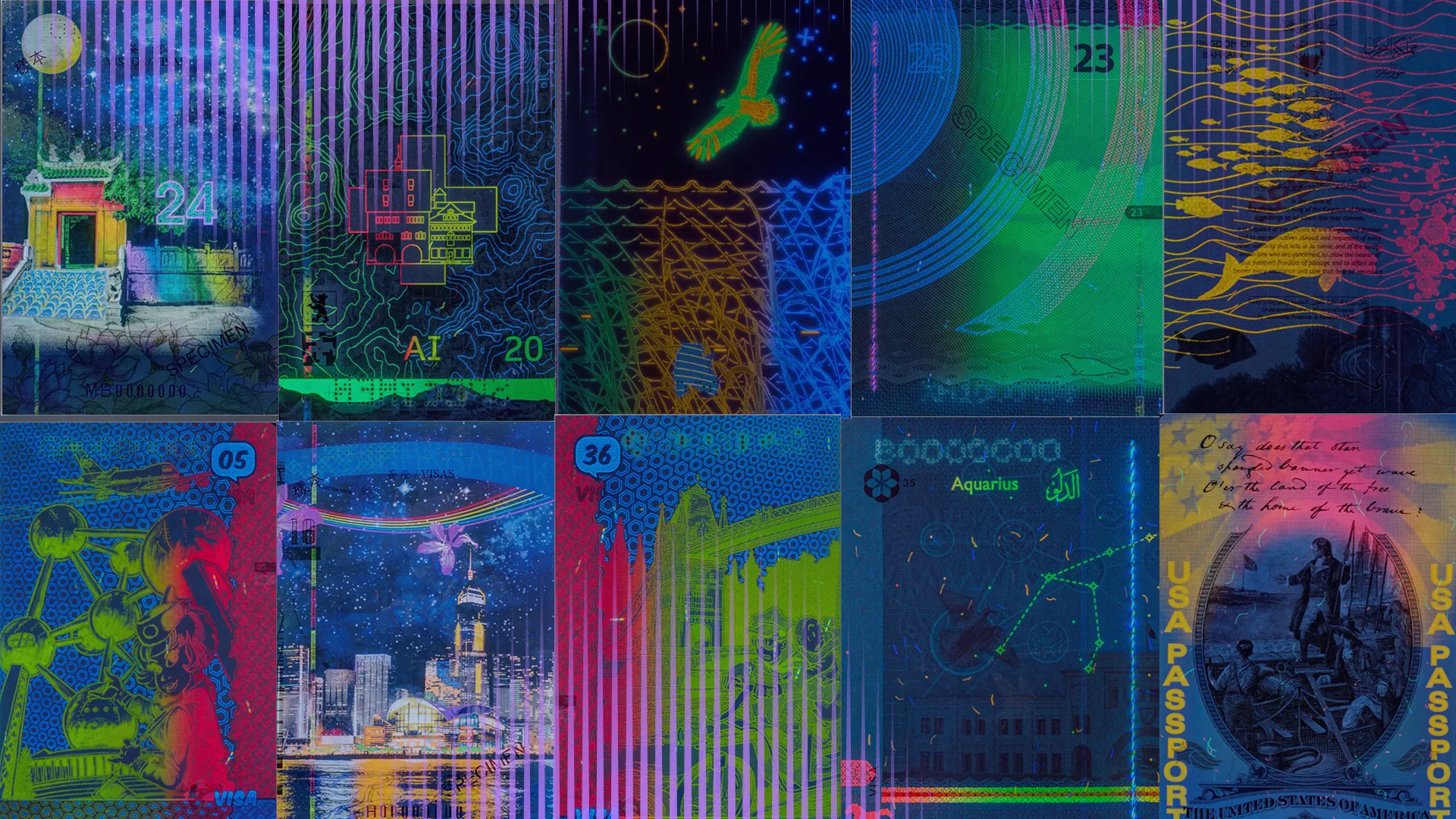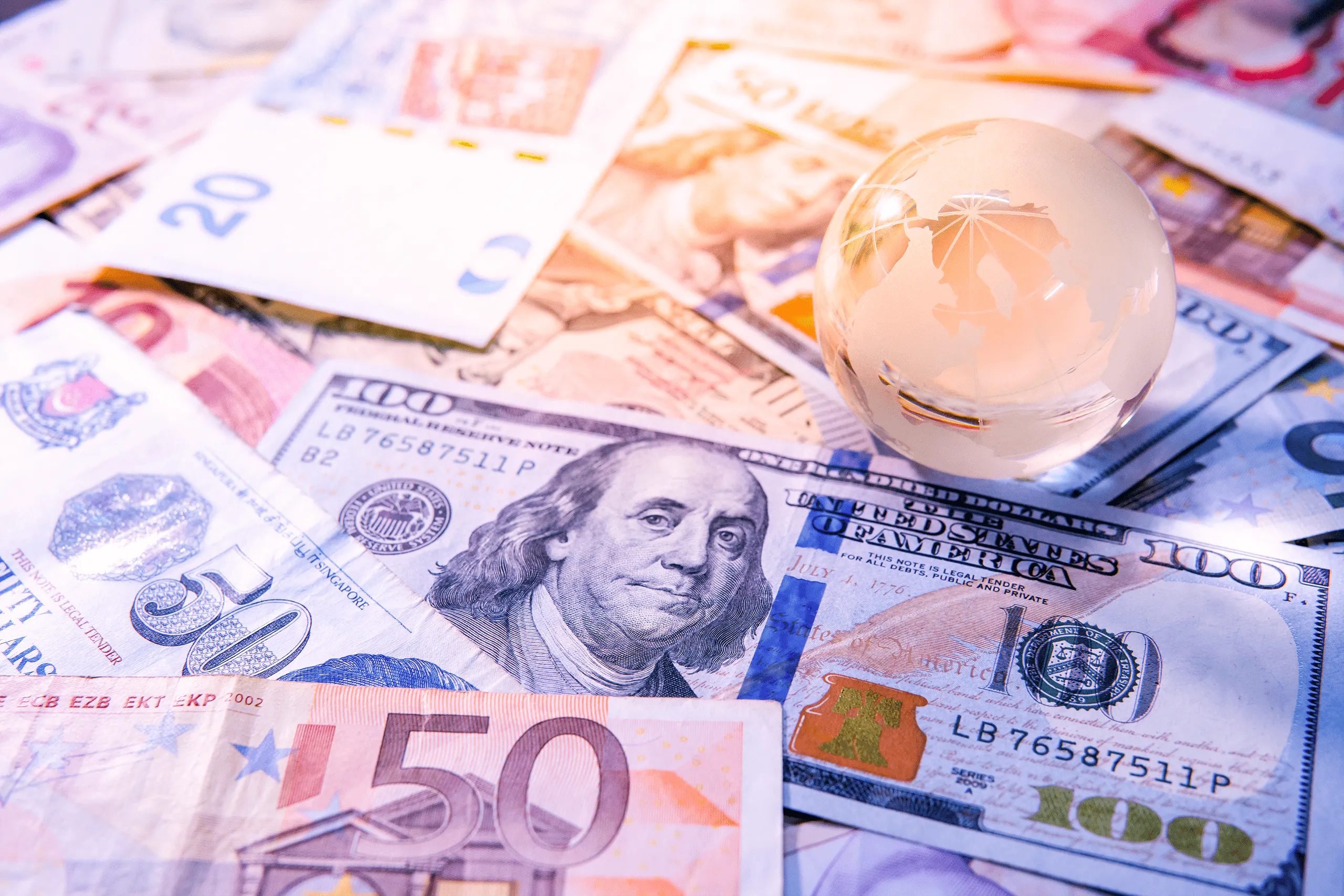As criminals gain more access to resources and tools for forgery, document manufacturers are striving to implement the newest and most advanced document security features. While some of them are still gaining traction and remain unique, others have stood the test of time and are notable for their complexity and effectiveness.
Let's look at the most advanced technologies used in documents and banknotes, and how to visualize and examine them with the use of Regula devices.
Get posts like this in your inbox with the bi-weekly Regula Blog Digest!
OVDot® holographic microparticles
Tiny metallic particles, with facets measuring from 100 to 1000 micrometers, are scattered throughout the document's substrate. According to the manufacturer, these particles reveal a holographic image, featuring either a nano image or nano text.
These holograms are carefully applied using the electron-beam lithography method onto the surface of the microparticles. When observed closely, the holographic elements display a fascinating characteristic: their colors change as the angle of illumination and observation shifts. This adds an intriguing visual dimension to the viewing experience and, of course, a high level of resistance to counterfeiting.
This security feature can be found in the passports of Romania and South Africa, as well as in the ID card of Georgia.

Identity card of Georgia issued in 2011. The image depicts the front side of the identity card, as well as the magnified OVDot® microparticles.

Passport of Romania issued in 2017. The image depicts the 1st page of the insert, as well as the magnified OVDot® microparticles.
You can notice the largest OVDot® microparticles using a magnifying glass, but you won’t be able to visualize the hologram itself or read the nano text on it. For professional examination, the best tool is a microscope. The new Portable Spectrometer-Microscope Regula 5006 features absolutely stunning magnification in a portable design. To demonstrate the power of the microscope, we used several sizes of OVDot® samples under the same level of magnification.

OVDot® sample examination. 300x on-screen magnification for a 32” 4K display.
Latent scrambled image
A latent scrambled image, as well as the subcategory, invisible personal information (IPI), is a security feature that appears as an image formed by strokes or raster elements. In simple words, it is an image encoded by special programs, and, under professional examination, the hidden text appears. It may be located in the background pattern or portrait area, and it is not visible to the naked eye. Once decoded, either by special filters or software, it reveals hidden personal data of the passport holder, including name, surname, serial number of the document, etc.

Passport of Belgium issued in 2022. The data page contains a latent scrambled image.
Frequently, the latent scrambled image is applied to the portrait area, but in the Irish passport, you can find an example where the same encoding technology is applied to the background pattern of the document.
Passport of Ireland issued in 2013. Page #19. The image depicts the visualized latent scrambled image applied to the image on the background pattern.
Passport of Romania issued in 2018. Page #17. This passport features a latent scrambled image that is printed with the use of special inks that are visible in ultraviolet light only.
In Regula products, decoding is implemented via software. The entire line of video spectral comparators is supplied with Regula Forensic Studio software, which accurately decodes latent scrambled images in documents. And there’s the Regula 4205D, a device designed for border control checks which is capable of decoding latent scrambled images as well. Plus, Regula readers also support such functionality.
Shaded light image
The shaded light image is a new type of secondary holder’s image. What makes it so unique is its invisibility in incident light, except for oblique light. As you can see, there is no picture in the incident white light, but as soon as you “play” with the angle of the light, you can find an image that copies the main portrait

Shaded light image on identity card of Austria
However, to capture such images in laboratory conditions, we recommend using professional forensic devices that contain coaxial white light.

Austrian ID card issued in 2021. Invisible holder’s portrait in incident white light. Right image depicts the holder's portrait visualized in a coaxial white light source using the Regula 4306.
To easily visualize these document security features, we recommend using one of our video spectral comparators for advanced document examination. Or you can use a simple yet powerful device, the Regula 4205D. Each of them features oblique white light sources that ease the process of examining document relief and security features; also, each of them has coaxial light sources to capture shaded light images.
Covert laser readable (CLR) image
A covert laser readable (CLR) image is a type of hidden image embedded within a hologram to enhance its security. This image is created using a high-precision technique called electron-beam lithography during the manufacturing of the hologram. To see a CLR image, you need special equipment that shines laser light onto it. When the laser beam hits the hologram at a right angle, it reflects off and projects the hidden image onto the screen of the device.

Passport of Denmark issued in 2021. The first page of the insert contains a CLR image.
Passport of Romania issued in 2017. The data page contains a CLR image.

20 euro banknote issued in 2015.
Usually, such types of document security features require a special device that is capable of visualizing this concrete image, as manufacturers make each CLR image under particular conditions and according to their own standards. At Regula, we wanted to unify all of the small devices developed to visualize only one type of CLR image; as a result, we created a portable device, the Regula 2305, that is able to visualize the majority of existing CLR images.
Anti-Stokes inks
Invisible under normal conditions, anti-Stokes inks become visible when exposed to high-intensity IR light (970-990 nm), serving as a covert authentication method that is difficult for counterfeiters to replicate accurately.
We hear you saying “Anti-Stokes is not that rare,” and we absolutely agree with you. The only thing that is actually rare in this case are the crystals of rare-earth metals that are used to produce this security feature: ytterbium, thulium, etc.
At the core of this effect lies the emission of higher energy photons than those which were absorbed.

Passport of the USA issued in 2020. The whole passport page can be exposed to visualize anti-Stokes inks.

Many current documents contain just tiny images or even scattered microparticles that glow when exposed to high-intensity IR. From left to right: passport of Sweden issued in 2022 and passport of Iceland issued in 2019.
Regula offers the best technologies to accurately deal with the anti-Stokes effect.
The Regula 4306 features powerful light sources that allow you to study this security feature in live mode. This means you will be able to find the anti-Stokes effect, especially the tiniest of its images/patterns, much easier and faster, in comparison with the “flash” mode, which lasts mere seconds.
And the last but not the least security feature to mention is…
Thermochromic ink
This type of ink undergoes color changes or transparency shifts in response to temperature fluctuations. The effect is caused by alterations in the chemical composition or physical properties of heat-sensitive pigments.
More and more modern travel documents contain this security feature. This small element, which disappears or changes color under temperature, is found in the passports of Austria, Finland, and Canada that were issued in 2023.
Passport of Austria issued in 2023. The data page contains an image applied with thermochromic ink.
Passport of Finland issued in 2023. The data page contains an image applied with thermochromic ink.
In order to see this effect with your own eyes, we recommend using the Dual-Video Spectral Comparator Regula 4308. This USB device can easily extend the capabilities of your Regula device, and store images for further use. Also, there is the Regula 4325, which has an integrated thermostage, and many additional devices that will help you during document analysis.
If you're interested in learning about security features in modern banknotes, don't hesitate to read The Forgery-Proof Design Behind Modern Banknotes: 8 Outstanding Examples
That’s it for today!
All illustrations for this post were taken from the Regula Information Reference Systems, comprehensive weekly updated catalogs of travel documents that contain thousands of samples with clickable document security features and printing techniques. These catalogs will become your helping hand in carrying out authenticity verification of banknotes anywhere and anytime.
Let us know if you’re interested in any other document security features to include in the next post, and don’t hesitate to contact us in order to get a comprehensive consultation about identity verification and document examination.





